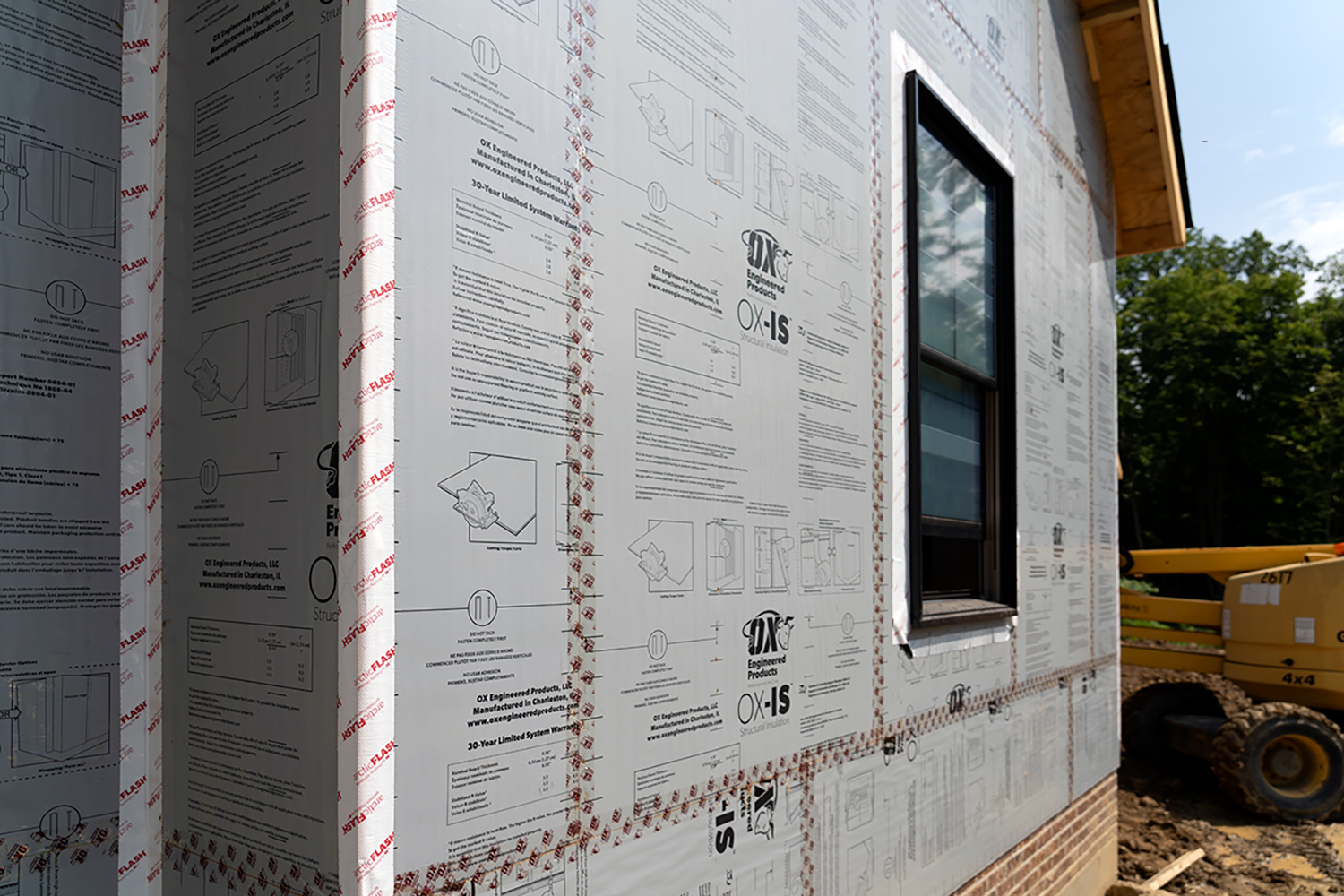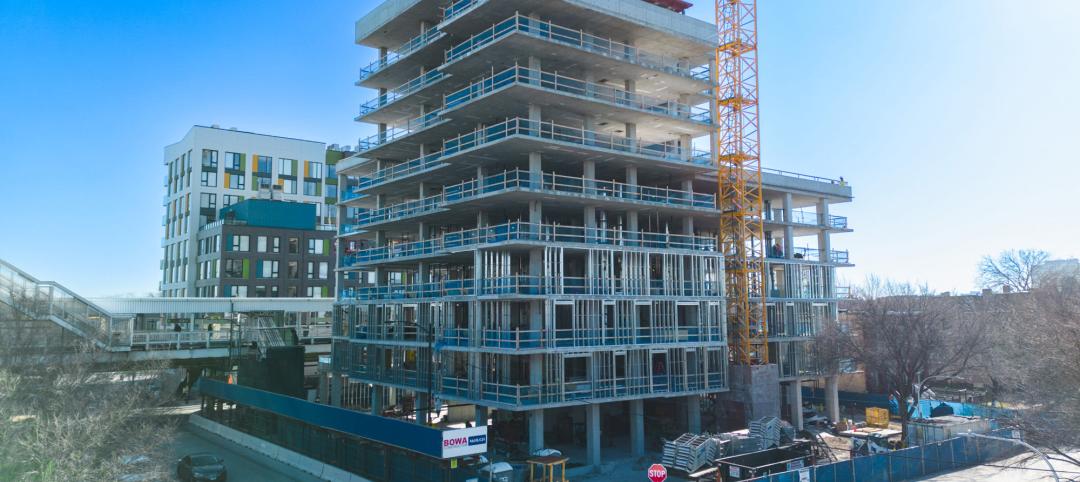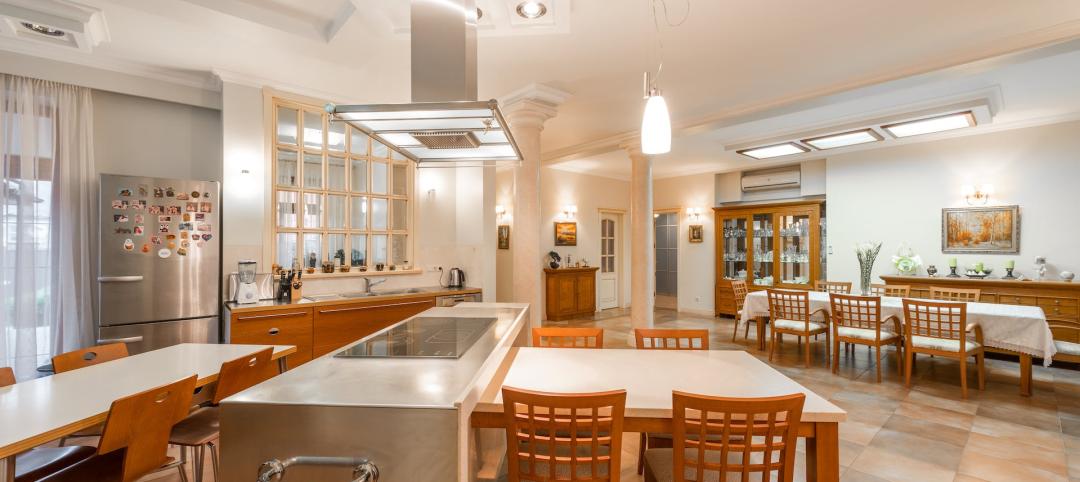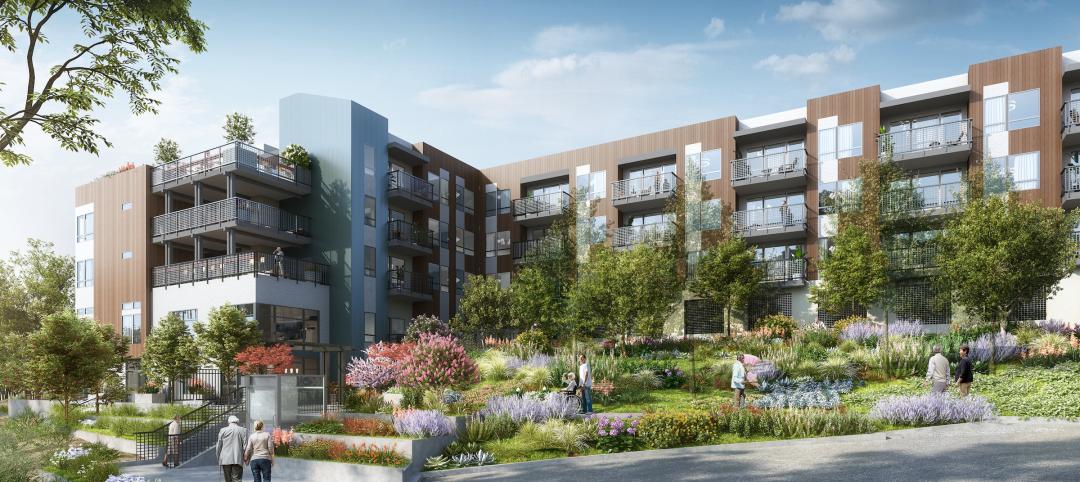For any construction project in the 21st century, achieving energy-efficiency is a prime directive. Among the arsenal of tools available to builders charged with constructing exterior walls, insulated sheathing stands out as a key component in enhancing overall thermal performance. These integrated materials, such as the innovative solutions offered by OX Engineered Products, play a vital role in optimizing energy efficiency, providing structural strength, and enhancing comfort levels for occupants inside of multifamily dwellings.
Total Thermal Performance
Insulated sheathing is designed to enhance the performance of a building’s thermal envelope while adding structural strength. By providing an additional layer of continuous insulation on the outside of the exterior walls, it helps reduce thermal bridging, which occurs when heat is transferred through materials with higher conductivity, such as wood studs or metal framing. This results in more consistent indoor temperatures, reduced heat loss in winter, and minimized heat gain in summer. When installed with the proper seam tapes and used in conjunction with thermally efficient windows and doors, the material can significantly bolster a building’s overall energy efficiency.
Furthermore, integrated insulated sheathing materials can serve as a moisture barrier as well, protecting the building from water infiltration and condensation. This not only improves the long-term durability of the structure but also enhances indoor air quality by preventing mold and mildew growth.
In addition to its thermal and moisture benefits, insulated sheathing – when installed continuously and properly – contributes to the overall air tightness of a building envelope. This air sealing effect helps reduce the infiltration of outside air, preventing energy loss associated with unwanted drafts. When combined with other energy-efficient building practices, such as the proper sealing of joints and penetrations, insulated sheathing can play a pivotal role in achieving a high-performance building envelope that meets or exceeds energy code requirements.
These materials specifically help meet the 2021 International Energy Conservation Codes and can assist builders and owners in achieving significant federal rebates such as the 45L tax credits, which apply to both single-family and multifamily construction.
Integrated Solutions: The OX-IS Advantage
A prime example of a high-performance integrated material is OX Engineered Products' OX-IS insulated sheathing system. While OX-IS offers exceptional thermal insulation, its benefits go beyond just enhancing R-values. The system is designed to bolster the performance of the overall building envelope, contributing to improved energy efficiency, indoor comfort, and the health of the structure.

Moreover, OX-IS is easy to install, reducing construction time and labor costs. Its lightweight nature makes it ideal for a wide range of applications, from residential to multifamily and commercial buildings. Additionally, OX-IS is an environmentally friendly material made with more than 70% post-consumer recycled materials, contributing to greener structures.
See the Stats
According to a study by the Department of Energy, buildings account for approximately 40% of total U.S. energy consumption. By incorporating insulated sheathing, builders can do their part to help reduce this figure. The energy efficiency of the built environment is crucial to achieving global sustainability goals, and selecting the right products can have a big impact.
On a micro scale, per individual structure, products such as OX-IS can reduce ACH50 blower door test results by 15 to 20 percent, some homes and buildings even greatly exceeding this number. In addition, the 4-in-1 insulated sheathing material has proven to reduce heating and cooling costs by anywhere from 20 to 40 percent, allowing owners to choose downsized HVAC systems when outfitting a multifamily building with new units. This, in itself, can save owners big. Finally, when compared to using uninsulated OSB, 1-inch OX-IS delivers a 1,100% increase in R-value for the structure.
Ultimately, selecting insulated sheathing materials leads to substantial energy savings over the life of a building and helps to create a reduced carbon footprint.
Building Better
Insulated sheathing plays a crucial role in improving the thermal performance of multifamily buildings. To meet the most stringent code requirements set by the International Code Council, many builders are using insulated sheathing in conjunction with standard batt or spray foam for even greater thermal performance.
Integrated products such as OX-IS are helping builders nationwide meet these rising energy demands, while giving a much-needed boost to a building’s air and moisture resistance.
By leveraging these innovative, integrated products, the industry can continue to create sustainable structures that meet the evolving demands of modern construction.
Related Stories
Affordable Housing | Jan 18, 2024
Habitat tops off second apartment building at 43 Green
The co-developers of 43 Green celebrate the latest milestone for the $100 million, mixed-income, mixed-use project in Bronzeville: topping off Phase 2 while reaching full lease-up of the Phase 1 apartment building.
Adaptive Reuse | Jan 12, 2024
Office-to-residential conversions put pressure on curbside management and parking
With many office and commercial buildings being converted to residential use, two important issues—curbside management and parking—are sometimes not given their due attention. Cities need to assess how vehicle storage, bike and bus lanes, and drop-off zones in front of buildings may need to change because of office-to-residential conversions.
MFPRO+ News | Jan 12, 2024
Detroit may tax land more than buildings to spur development of vacant sites
The City of Detroit is considering a revamp of how it taxes property to encourage development of more vacant lots. The land-value tax has rarely been tried in the U.S., but versions of it have been adopted in many other countries.
MFPRO+ News | Jan 12, 2024
As demand rises for EV chargers at multifamily housing properties, options and incentives multiply
As electric vehicle sales continue to increase, more renters are looking for apartments that offer charging options.
Student Housing | Jan 12, 2024
UC Berkeley uses shipping containers to block protestors of student housing project
The University of California at Berkeley took the drastic step of erecting a wall of shipping containers to keep protestors out of a site of a planned student housing complex. The $312 million project would provide badly needed housing at the site of People’s Park.
Sustainability | Jan 10, 2024
New passive house partnership allows lower cost financing for developers
The new partnership between PACE Equity and Phius allows commercial passive house projects to be automatically eligible for CIRRUS Low Carbon financing.
Apartments | Jan 9, 2024
Apartment developer survey indicates dramatic decrease in starts this year
Over 56 developers, operators, and investors across the country were surveyed in John Burns Research and Consulting's recently-launched Apartment Developer and Investor Survey.
Giants 400 | Jan 8, 2024
Top 60 Senior Living Facility Construction Firms for 2023
Whiting-Turner, Ryan Companies US, Weis Builders, Suffolk Construction, and W.E. O'Neil Construction top BD+C's ranking of the nation's largest senior living facility general contractors and construction management (CM) firms for 2023, as reported in the 2023 Giants 400 Report.
Giants 400 | Jan 8, 2024
Top 40 Senior Living Facility Engineering Firms for 2023
Kimley-Horn, Olsson, Tetra Tech, EXP, and IMEG head BD+C's ranking of the nation's largest senior living facility engineering and engineering/architecture (EA) firms for 2023, as reported in the 2023 Giants 400 Report.
Giants 400 | Jan 8, 2024
Top 80 Senior Living Facility Architecture Firms for 2023
Perkins Eastman, Hord Coplan Macht, Lantz-Boggio Architects, Ryan Companies US, and Moseley Architects top BD+C's ranking of the nation's largest senior living facility architecture and architecture engineering (AE) firms for 2023, as reported in the 2023 Giants 400 Report.

















